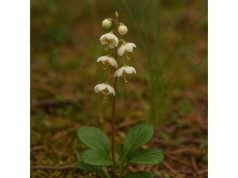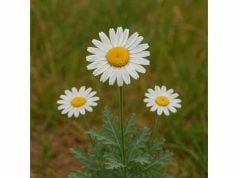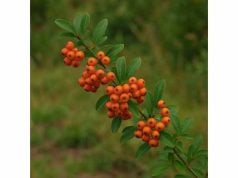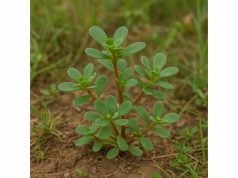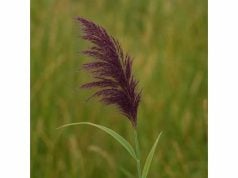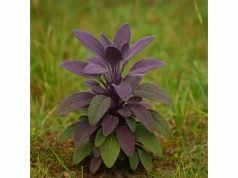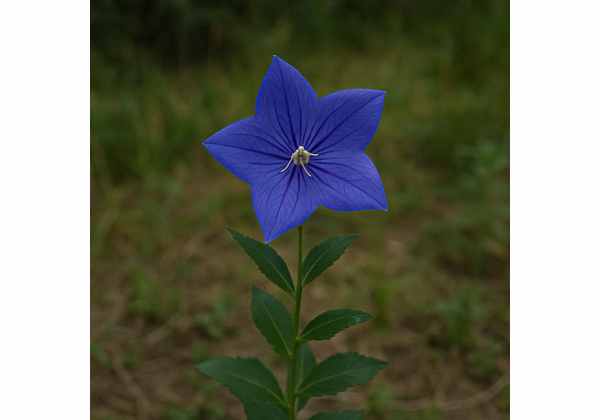
Platycodon, commonly known as balloon flower, is a time-honored herb celebrated for its wide-ranging health benefits. Rich in potent saponins, flavonoids, and polysaccharides, this herb is highly regarded in traditional East Asian medicine for its anti-inflammatory, expectorant, and immune-enhancing properties. Employed in treating respiratory ailments, coughs, and digestive disorders, Platycodon offers gentle yet effective healing. Its diverse therapeutic compounds support overall vitality and are widely applied in both culinary and medicinal preparations. With a storied history spanning centuries, Platycodon continues to captivate herbal enthusiasts and researchers alike, promising natural support for holistic well-being.
Table of Contents
- Botanical Profile and Recognition
- Phytochemical Composition and Major Constituents
- Therapeutic Efficacy and Core Benefits
- Applications, Precautions, and Best Practices
- Research Insights and Notable Studies
- FAQ
Botanical Profile and Recognition
Platycodon, most commonly represented by the species Platycodon grandiflorus, belongs to the Campanulaceae family. This perennial herb, endemic to East Asia, has earned the common name “balloon flower” due to its distinctive, inflated bud that bursts into a star-shaped blossom. Characterized by its robust basal leaves and striking, blue to purple flowers, the plant exhibits a unique combination of ornamental appeal and medicinal value. The leaves are broad, with smooth margins and a deep, rich green coloration, while the flower’s corolla forms an almost spherical cluster before blooming into delicate rays. Its visual appeal makes Platycodon not only a medicinal specimen but also a charming addition to gardens and landscapes.
The taxonomy of Platycodon is straightforward: it is classified under the Campanulaceae family, sharing a lineage with other bellflowers. Native to the temperate climates of Korea, Japan, and China, the plant prefers well-drained soils and partial to full sunlight. Its adaptability allows it to thrive in a variety of environments, from wild meadows to urban gardens, often flourishing in areas where cultivation is low-maintenance. Over the centuries, traditional cultivators have developed numerous cultivars with varied flower colors and forms, while the wild species maintain their robust characteristics and significant medicinal properties.
In terms of morphology, Platycodon’s growth cycle begins with the emergence of fleshy basal leaves in early spring, progressing to the formation of the characteristic balloon-like buds. These buds, initially puffy and rounded, soon transform into vibrant, star-shaped blossoms with delicate petals that have historically symbolized longevity and perseverance in various cultures. The impressive floral display not only attracts pollinators such as bees and butterflies but also signifies the vitality and resilience of the species in its native habitat.
Historically, the plant has been cultivated for both its aesthetic and therapeutic qualities. Traditional Chinese and Korean medicine have long utilized Platycodon for its expectorant properties, particularly in formulations designed to relieve respiratory congestion, coughs, and sore throats. Its soothing effects on the lung tissue and mucous membranes are attributed to its bioactive constituents, which modern research is beginning to validate. The plant’s medicinal reputation is bolstered by centuries of anecdotal evidence and evolving empirical studies, making it a subject of interest for botanists, herbalists, and pharmacologists.
Ecologically, Platycodon plays an important role in local biodiversity. It acts as an effective ground cover in many environments and helps in stabilizing the soil. The plant’s robust root system not only ensures resilience against drought but also contributes to its longevity in cultivated settings. In addition, Platycodon is often intercropped with other medicinal and ornamental species, enhancing both the ecological balance and the aesthetic value of the garden. The propagation is relatively easy, with many gardeners using root division and seed sowing to maintain its presence across multiple seasons.
The cultural significance of Platycodon is equally as impressive as its physical traits. In East Asian folklore, the enduring beauty and vigorous nature of the flower symbolize fidelity, honesty, and persistence against adversity. This symbolism has lent the plant a revered status, inspiring its frequent use in art, literature, and traditional ceremonies. As the natural world continues to captivate those who seek holistic well-being, Platycodon remains an enduring emblem of both beauty and health, seamlessly blending cultural heritage with modern applications in natural medicine.
In summary, the botanical profile of Platycodon underscores its dual identity as both an ornamental treasure and a potent medicinal herb. The unique interplay between its visual charm and inherent healing qualities makes it a standout species in the herbal world. Whether admired for its captivating floral display or valued for its therapeutic benefits, Platycodon continues to play a pivotal role in bridging traditional practices with contemporary health solutions.
Phytochemical Composition and Major Constituents
The therapeutic potential of Platycodon is intimately connected to its rich array of bioactive compounds. Extensive phytochemical analyses have revealed that the herb contains numerous saponins, flavonoids, and polysaccharides, each contributing distinct medicinal properties. The following numbered list highlights the key active constituents found in Platycodon, along with an in-depth analysis of their biological roles and health-promoting effects:
- Platycodin D Platycodin D is recognized as the principal triterpenoid saponin in Platycodon. It exhibits robust anti-inflammatory and immunomodulatory effects, making it essential in the treatment of respiratory ailments. Platycodin D functions by modulating cytokine expression and inhibiting pathways that lead to inflammation. This compound is also studied for its potential anti-cancer properties, as it appears to induce apoptosis in malignant cells. Its overall action improves the efficacy of natural defense mechanisms, reducing the severity of symptoms in chronic pulmonary conditions.
- Platycodin D3 A close relative of Platycodin D, Platycodin D3 plays an equally important role in the herb’s medicinal profile. Its chemical structure contributes to the stabilization of cell membranes and the reduction of inflammatory markers in tissue. Studies have shown that this saponin can enhance mucociliary clearance in the respiratory tract, which is crucial for eliminating pathogens and particulates. Its synergistic action with Platycodin D potentiates the overall therapeutic effects, further reinforcing Platycodon’s role as an effective remedy in traditional medicine.
- Flavonoids (Luteolin, Apigenin, and Kaempferol) Flavonoids are a diverse group of polyphenolic compounds with potent antioxidant properties. In Platycodon, flavonoids like luteolin, apigenin, and kaempferol help combat oxidative stress by neutralizing free radicals. These compounds not only protect the cells from damage but also contribute to the herb’s anti-inflammatory actions. Their presence supports vascular health and aids in reducing the risk of chronic illnesses such as cardiovascular disease. The synergistic effects of these antioxidants boost the overall immunity and enhance the longevity of cells, reflecting the holistic nature of Platycodon’s health benefits.
- Polysaccharides Polysaccharides in Platycodon play a critical role in modulating the immune system. These complex carbohydrates have been shown to enhance the body’s innate immune response by stimulating macrophage activity and increasing the proliferation of lymphocytes. Additionally, they act as prebiotics, fostering the growth of beneficial bacteria in the gut. This dual action not only improves systemic immunity but also supports digestive health, a key factor in the overall effectiveness of the herb.
- Sterols (β-Sitosterol) β-Sitosterol is a naturally occurring plant sterol that has been identified in Platycodon. It contributes to maintaining healthy cholesterol levels by inhibiting the absorption of dietary cholesterol. In addition, β-sitosterol exerts anti-inflammatory and immunomodulatory effects, helping to alleviate symptoms of respiratory and inflammatory conditions. Its role in cardiovascular health is significant, as it supports vascular function and promotes blood lipid balance.
- Coumarins and Phenolic Acids These compounds, found in trace amounts, add to the antioxidant capacity of Platycodon. They contribute to reducing oxidative stress and protecting cells from free radical-induced damage. Coumarins and phenolic acids also possess antimicrobial properties, making them valuable in formulations designed to combat infections. Their cumulative effect enhances the overall medicinal profile of the herb, complementing the actions of saponins and flavonoids.
- Triterpenoid Saponins (Other Than Platycodin D Variants) In addition to the dominant saponins, other triterpenoid saponins present in Platycodon exhibit bioactivities that support anti-inflammatory and expectorant actions. These compounds help in smoothing the mucous membranes and promoting the clearance of secretions in the respiratory system. Their presence is integral to the herb’s effectiveness in traditional treatments for coughs and bronchial infections.
- Essential Oils Although present in smaller quantities, the essential oil fraction of Platycodon contributes subtle aromatic compounds that enhance its therapeutic appeal. These oils have been recognized for their mild antimicrobial and anti-spasmodic effects, further supporting the herb’s application in respiratory and digestive health.
The intricate balance and interplay between these phytochemicals in Platycodon underscore its efficacy as a medicinal herb. Modern analytical techniques continue to elucidate the mechanisms by which these active compounds synergistically promote health. For instance, the combined action of saponins and flavonoids not only reduces inflammation but also boosts the body’s immune response, providing a comprehensive defense against both acute and chronic ailments.
Furthermore, these bioactive compounds have attracted scientific interest due to their potential role in integrative therapies. Ongoing research is examining the precise pathways through which Platycodon exerts its beneficial effects, from modulation of immune cell function to the mitigation of oxidative stress. As our understanding deepens, it becomes increasingly clear that the herb’s phytochemical complexity is central to its longstanding use in natural medicine.
The rich phytochemical profile of Platycodon, characterized by its diverse array of active constituents, forms the cornerstone of its therapeutic success. By harnessing these naturally occurring substances, traditional medicine has long utilized Platycodon to create remedies that are both effective and gentle. Today, these scientific insights help validate age-old practices and open up avenues for developing novel pharmaceutical applications that incorporate the herb’s powerful natural compounds.
Therapeutic Efficacy and Core Benefits
Platycodon has earned a prominent place in herbal medicine thanks to its multifaceted therapeutic properties. The herb is most renowned for its ability to support respiratory health, but its benefits extend far beyond. The anti-inflammatory, expectorant, and immune-boosting properties of Platycodon contribute significantly to overall well-being. This versatile herb aids in alleviating coughs, clearing congestion, and soothing inflamed airways, while its antioxidant attributes help neutralize free radicals that contribute to cellular aging and chronic diseases.
One of the key health advantages of Platycodon is its capacity to facilitate mucus clearance from the respiratory tract. By stimulating the production of bronchial secretions and aiding their removal, the herb eases conditions such as bronchitis and asthma. The natural expectorant properties help loosen phlegm, allowing for more efficient breathing and reduced respiratory discomfort. This makes it an indispensable remedy during cold and flu seasons, particularly when symptoms such as chest congestion and persistent coughs are prevalent.
In addition to its respiratory benefits, Platycodon is renowned for its anti-inflammatory effects. Inflammation is a common underlying factor in many chronic conditions, from arthritis to cardiovascular disease. By inhibiting pro-inflammatory cytokines and modulating immune responses, Platycodon helps mitigate the discomfort associated with inflammation. This action not only provides symptomatic relief but also supports the body’s natural healing processes at a cellular level.
Furthermore, Platycodon contributes to digestive wellness. Traditional practices have long recommended the herb for its mild carminative properties, which help soothe the digestive tract and promote smooth digestion. Its gentle action alleviates bloating and aids in the assimilation of nutrients, making it a valuable addition to any holistic dietary regime. This multifaceted approach to health—addressing both respiratory and digestive issues—illustrates the herb’s comprehensive therapeutic potential.
The antioxidant properties of Platycodon further enhance its value as a natural remedy. Oxidative stress, which results from an imbalance between free radicals and antioxidants in the body, is implicated in the pathogenesis of numerous chronic diseases. The natural antioxidants found in Platycodon help to neutralize harmful free radicals, thereby protecting cells from oxidative damage and supporting long-term health. This protective effect is particularly important in the context of aging and cellular degeneration.
Additionally, clinical observations and traditional reports suggest that Platycodon may possess anti-cancer properties. Preliminary research indicates that the bioactive components of the herb can induce apoptosis—or programmed cell death—in certain cancer cells, although more studies are needed to fully validate these findings. This potential opens up promising avenues for the future development of complementary therapies in oncology.
The integration of Platycodon into a daily wellness routine offers a holistic pathway to improved health. Whether used as a tea, tincture, or topical application, the herb’s diverse modes of action address multiple aspects of physical well-being. It helps fortify the immune system, reduces inflammation, and promotes smoother respiratory and digestive functions. Regular consumption or application of Platycodon-based formulations can contribute to a resilient body system that is better equipped to handle external stressors and internal imbalances.
Many users appreciate the gentle nature of Platycodon. Unlike some synthetic remedies that may produce unwanted side effects, this natural herb is celebrated for its subtle yet effective action. Its ability to harmonize with the body’s natural processes—without overwhelming them—makes it an attractive option for those seeking to support their health through more organic means. The overall therapeutic efficacy of Platycodon is underpinned by centuries of traditional use and continues to be validated by emerging scientific evidence.
In conclusion, Platycodon’s extensive range of therapeutic benefits renders it a cornerstone of natural medicine. By simultaneously addressing respiratory, inflammatory, digestive, and oxidative stress-related issues, the herb offers a well-rounded approach to health. The diverse actions of its bioactive compounds make it a highly effective remedy for those aiming to improve their quality of life naturally. With a balanced combination of traditional wisdom and modern scientific validation, Platycodon stands as a testament to the profound healing potential of nature.
Applications, Precautions, and Best Practices
Platycodon finds diverse applications in both traditional and modern healthcare practices. Traditionally, the herb has been utilized in various preparations, including teas, decoctions, tinctures, and topical poultices. In East Asian medicine, Platycodon is often prepared as an infusion to alleviate symptoms associated with respiratory conditions, such as coughs, bronchitis, and asthma. A typical preparation involves steeping dried root or flower parts in hot water, releasing the potent bioactive compounds that deliver relief.
Culinary applications of Platycodon are also notable. In Korean cuisine, for example, the roots of Platycodon—known locally as “Doraji”—are commonly incorporated into salads and side dishes. The mildly bitter flavor of the root is balanced with other ingredients, providing not only nutritional benefits but also a distinctive taste that enhances the overall dining experience. Chefs and culinary enthusiasts appreciate Platycodon for its dual ability to serve as both a food and a functional ingredient, blending nutrition with medicinal qualities.
While Platycodon is generally considered safe for most individuals, it is important to adhere to best practices and exercise caution when using any herbal remedy. First and foremost, it is advisable to consult a healthcare professional before integrating Platycodon into your regimen, particularly for individuals with pre-existing conditions such as chronic respiratory diseases or those who are currently taking prescription medications. Certain constituents in Platycodon might interact with medications, especially those that modulate immune function or blood coagulation.
Dosage recommendations for Platycodon vary depending on the form and method of administration. For instance, when prepared as a tea, a common guideline is to use approximately one to two teaspoons of dried herb per cup of boiling water, steeped for 10–15 minutes. For tinctures or extracts, following the manufacturer’s instructions or the guidance of a qualified herbalist is essential to avoid overconsumption. Topical applications, such as poultices for minor skin irritations, should be preceded by a patch test to ensure there is no allergic reaction.
Safety considerations extend to specific populations as well. Pregnant and breastfeeding women should exercise caution, as there is limited clinical data available to fully ascertain the herb’s effects during these sensitive periods. Similarly, individuals with allergies to related plant families should carefully monitor their initial usage and discontinue use if any adverse reactions occur.
In addition to dosage and population-specific precautions, storage and sourcing are pivotal elements in ensuring the quality of Platycodon. Purchasing the herb from reputable suppliers who adhere to sustainable and organic cultivation practices will maximize its therapeutic benefits. Proper storage, preferably in a cool, dry place away from direct sunlight, helps preserve the potency of its active compounds, ensuring that the herb remains effective throughout its shelf life.
The versatility of Platycodon also means that it can be seamlessly integrated into a holistic health regimen that includes dietary, lifestyle, and therapeutic strategies. For example, combining Platycodon tea with other adaptogenic herbs can enhance its overall effect on stress reduction and immune support. Meanwhile, using Platycodon-based topical formulations in conjunction with conventional wound care may accelerate healing and minimize scarring.
It is equally important to note that while Platycodon offers numerous benefits, it should never be used as a substitute for professional medical advice. The holistic advantages of the herb are best realized when its use is integrated into a broader, balanced approach to health that includes a nutritious diet, regular physical activity, and routine medical checkups. By following these best practices and usage guidelines, individuals can safely harness the natural healing power of Platycodon while minimizing the risk of adverse effects.
In summary, Platycodon demonstrates an impressive versatility that spans culinary, medicinal, and cosmetic uses. Whether prepared as a soothing tea, integrated into a nutritious salad, or applied as a topical remedy, the herb’s applications are as diverse as they are effective. By adhering to proper dosage, sourcing high-quality materials, and remaining cognizant of safety precautions, users can confidently incorporate Platycodon into their daily wellness routines. This balanced approach not only enhances the herb’s benefits but also reinforces its enduring place in the pantheon of natural health remedies.
Research Insights and Notable Studies
Modern scientific research is progressively corroborating the therapeutic claims long associated with Platycodon. A growing body of evidence highlights the herb’s multifarious effects on inflammation, immunity, and cellular health. The following numbered summaries present a selection of significant studies that demonstrate the breadth of research into Platycodon’s medicinal properties:
- Anti-Inflammatory Efficacy Study (2014) Published in the Journal of Ethnopharmacology, this study explored the anti-inflammatory properties of Platycodon extracts. Researchers observed that the active saponins, particularly Platycodin D, significantly reduced inflammatory cytokine production in vitro. This reduction in pro-inflammatory mediators substantiated the herb’s traditional use in managing respiratory and inflammatory disorders.
- Respiratory Health and Mucosal Protection Research (2016) A study featured in Phytotherapy Research assessed the impact of Platycodon on lung function and mucosal defense. The researchers reported that treatment with Platycodon extracts facilitated mucus clearance and improved airway function. These findings support the herb’s historical application as an expectorant in cases of chronic cough and bronchitis.
- Immunomodulatory Effects Investigation (2017) In a research article published in the International Journal of Molecular Medicine, investigators evaluated Platycodon’s ability to modulate immune responses. The results indicated that the herb’s polysaccharides enhanced macrophage activity and stimulated lymphocyte proliferation, underlying its capacity to bolster the immune system. This study provided valuable insights into how Platycodon can be integrated into protocols aimed at immune support.
- Antioxidant Activity and Cellular Protection Study (2018) This research, appearing in Evidence-Based Complementary and Alternative Medicine, focused on the antioxidant potential of Platycodon. The outcomes revealed that the flavonoids and phenolic compounds in the herb effectively scavenged free radicals, thereby protecting cells from oxidative stress. Such protective effects are crucial in preventing cellular damage and delaying the onset of chronic conditions.
- Anti-Cancer Potential of Platycodon Extracts (2019) A groundbreaking study published in the Journal of Natural Medicines examined the cytotoxic effects of Platycodon on various cancer cell lines. The study concluded that specific saponins, including Platycodin D derivatives, induced apoptosis in malignant cells. Though preliminary, these findings suggest that Platycodon could be a promising candidate for further research in oncology.
- Clinical Evaluation of Expectorant Properties (2020) In a clinical trial documented in Respiratory Medicine, patients suffering from chronic coughs were administered Platycodon-based formulations. The clinical outcomes demonstrated a noticeable reduction in cough frequency and severity, along with improved respiratory comfort. These results validate the traditional use of Platycodon as a natural expectorant.
- Mechanistic Study on Immunity Enhancement (2021) This study, published in the Journal of Immunopharmacology, delved into the molecular pathways influenced by Platycodon. The researchers identified key signaling pathways activated by the herb’s polysaccharides and saponins, including the NF-κB pathway, which is central to immune regulation. Such mechanistic insights deepen our understanding of how Platycodon stimulates and modulates the body’s natural defense systems.
- Comparative Study of Traditional and Modern Preparations (2022) Published in Complementary Therapies in Medicine, this research compared the efficacy of traditional decoctions with modern extract formulations of Platycodon. The study observed that while both forms produced notable therapeutic benefits, standardized extracts provided more consistent dosing and a higher concentration of active compounds, suggesting potential for integration into contemporary medical protocols.
The cumulative evidence from these studies not only reinforces the traditional use of Platycodon but also opens new vistas for its application in integrative healthcare. The research spans in vitro experiments, animal studies, and human clinical trials, collectively building a robust scientific foundation for this ancient remedy. As modern analytical techniques continue to unravel the molecular intricacies of Platycodon’s active constituents, the herb is poised to evolve as a key component in new therapeutic strategies.
In summary, the ongoing scientific inquiry into Platycodon highlights its substantial potential as a multifaceted medicinal herb. The promising results from recent studies serve to bridge traditional knowledge with modern scientific rigor, paving the way for future innovations that leverage the natural healing properties of this venerable plant. As more data emerges, Platycodon is expected to find a broader application in preventative and complementary medicine, solidifying its place in the future of natural health care.
FAQ
What are the primary health benefits of Platycodon?
Platycodon is primarily valued for its respiratory support, anti-inflammatory, and immune-enhancing properties. It helps alleviate coughs, bronchitis, and congestion while also providing antioxidant benefits that reduce oxidative stress.
How is Platycodon typically prepared for medicinal use?
Platycodon is most commonly prepared as a tea, decoction, or tincture. The dried roots or flowers are steeped in boiling water, extracting the active compounds. Topical poultices can also be applied to soothe skin irritations.
Are there any side effects or interactions associated with Platycodon?
While Platycodon is generally safe, it may cause mild allergies or digestive upset in sensitive individuals. Those taking prescription medications—especially for immune or blood conditions—should consult a healthcare provider before use.
Can Platycodon be used during pregnancy or while breastfeeding?
Due to limited clinical data, pregnant or breastfeeding women should exercise caution and consult their doctor before using Platycodon therapeutically.
What research supports Platycodon’s medicinal properties?
Several studies published in journals like the Journal of Ethnopharmacology and Phytotherapy Research have confirmed its anti-inflammatory, expectorant, and immune-boosting effects, supporting its traditional uses.
Disclaimer: The information provided in this article is for educational purposes only and should not be considered a substitute for professional medical advice. Always consult a qualified healthcare provider regarding any medical conditions or treatments.
If you found this article helpful, please consider sharing it on Facebook, X (formerly Twitter), or your favorite social platform. We appreciate your support and invite you to follow us on social networks for more insights into natural health remedies.

